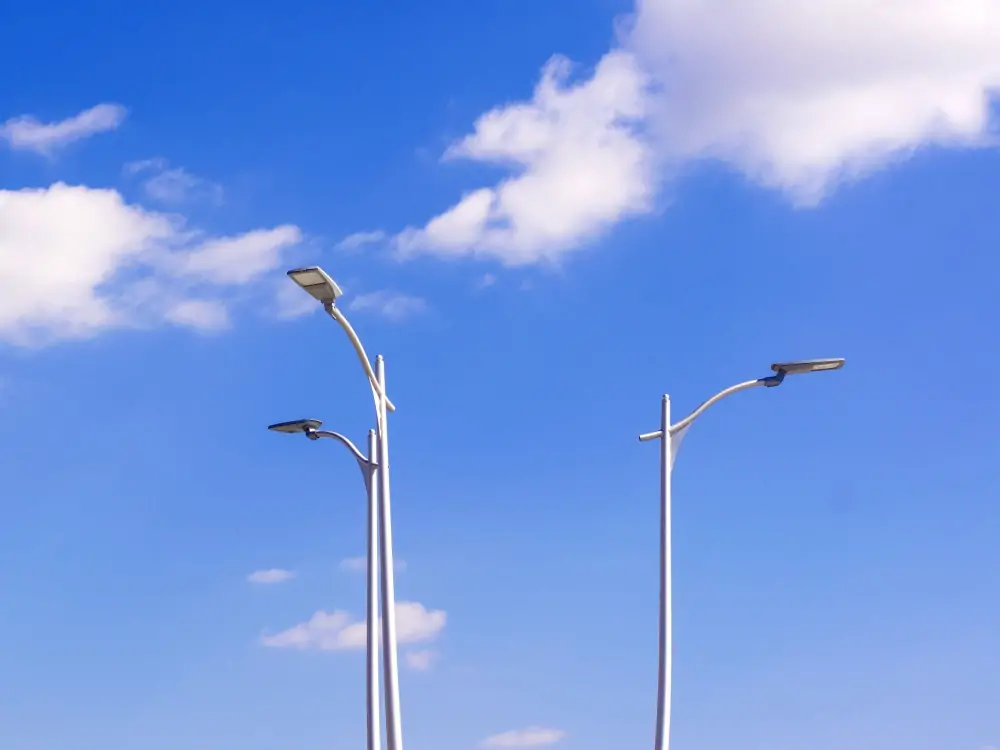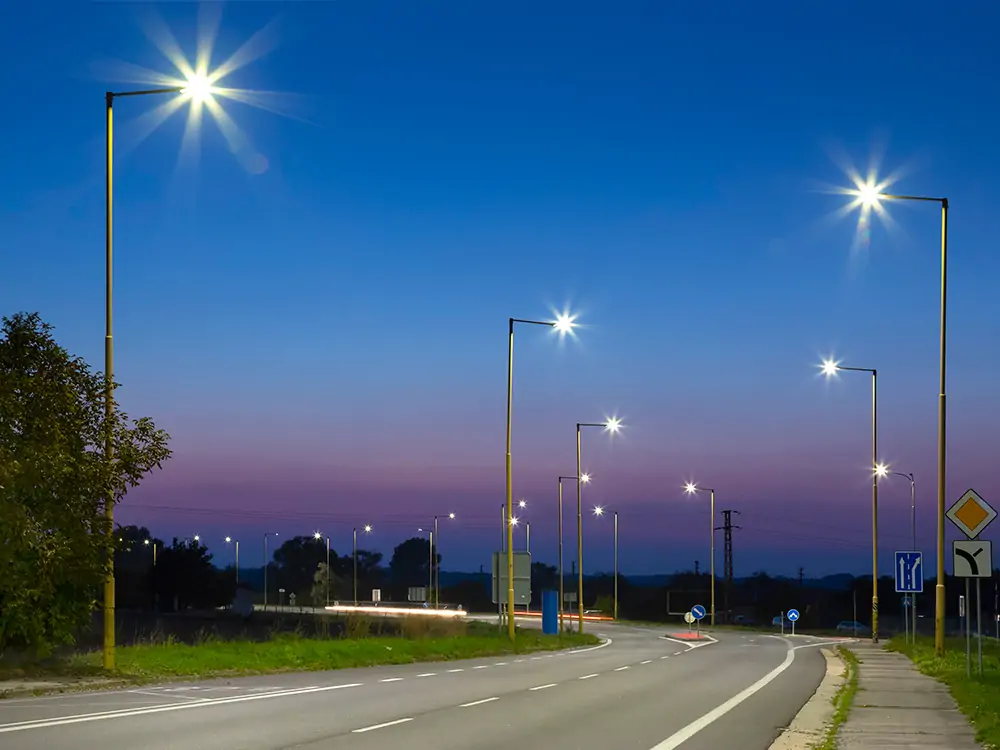We see street lights everywhere: highways, roads, parks, or our neighborhood. Streetlights play an essential role in keeping us safe by illuminating our paths. How tall are street lights? Have you ever walked down a street and wondered this? Is the height of a street light decided randomly or by its purpose? So, please find out how tall street lights are and how they differ from one another in this blog.
What Are the Standard Heights for Different Types of Street Lights?

Streetlights come in different heights, styles, and shapes, depending on the area. To simplify it for you, let us understand them through three broad categories:
- Residential areas
- Commercial and urban areas
- Highways and major roads
Let’s try to detail how tall street lights are under these categories.
Residential Areas
Generally, shorter street lights with simpler designs are found in residential areas. This is because the purpose of these lights is to focus on people’s safety and aesthetics.
This includes residential streets, park pathways, and suburban neighborhoods.
So, how tall are street lights in these areas?
The height of streetlights in such areas generally ranges from 10 to 20 feet. Shorter lights provide adequate lighting for sidewalks and driveways and lower light pollution.
Some examples of streetlights used in residential areas are:
- Lamp post
- Bollard Lights
- Decorative pole lights
Commercial and Urban Areas
Commercial and urban areas include downtown, shopping districts, and city centers. Streetlights in these areas are generally tall and sturdy to illuminate larger spaces. Due to heavy traffic in these areas, the need for powerful lights arises.
The height of streetlights generally ranges from 20 to 30 feet. This is to ensure visibility and security of both pedestrians and drivers. The design of the lights here is more modern and decorative to complement the area’s aesthetics.
A few examples of streetlights found here are:
- Cobra headlights
- Acorn lights
- Canopy lights
Highways and Major Roads
Highways, freeways, expressways, and all other major roads generally have the tallest lights. They are designed to illuminate expansive areas and guide high-speed traffic. They focus on functionality instead of aesthetics.
The height of streetlights ranges from 30 to 40 feet or even higher for highways with many lanes. They provide the most visibility for drivers and enhance road safety.
Examples of streetlights found here are:
- Floodlights
- High Mast lights
- Overhead lights
Well, we now know about the diversity and usage of streetlight types. These height ranges are approximate and may vary depending on their purpose. Each type of streetlight has a specific function, purpose, and design.
We now have an answer to how tall street lights are and why. So, it’s time to understand the factors determining their height in detail.
Factors Determining the Height of the Street Lights
Many factors influence the height of a streetlight. Here’s a detailed overview of the various factors that come into play.

Location and Surroundings
The location matters the most when deciding how tall a street light should be. For instance, urban areas have a dense population and thus need taller street lights. This will ensure adequate light over taller buildings and the safety of pedestrians. Also, vehicles need brighter roads and highways in urban areas. However, less density generally makes street lights shorter in rural areas. Moreover, it helps in minimizing light pollution.
Purpose and Function
Streetlights differ according to their purpose and function. In residential areas, street lights are usually lower to provide adequate light, ensuring pedestrians’ safety on the sidewalks and crosswalks.
Taller lights are installed in areas with high crime rates and security concerns. These lights increase visibility and thus help prevent crimes.
Moreover, highways and major roads have taller street lights to manage vehicular traffic. This provides clear visibility for drivers.
Road Design and Configuration
Road design also influences the height of street lights. Road width determines the spacing and height. That means the wider the road, the taller the lights to provide coverage.
Moreover, lights at intersections are tall to ensure drivers’ safety. Similarly, streetlights on curved or sloped roads are installed at specific heights. This ensures consistent light and visible roads.
Light Spread and Efficiency
Street light heights are chosen based on intensity to avoid glare or shadows. The desired light spread also determines the height of street lights. Energy-efficient lights, such as LED fixtures, allow for shorter lights.
Regulatory Requirements
Sometimes, municipalities decide the height of street lights. This is to ensure uniform heights, spacing, and designs. Not only that, but some countries also have national standards for the height of the lights. It promotes consistency and safety across different regions.
Future Trends in Street Lighting

Well, future trends in street lighting are evolving rapidly. The trend is shifting towards increasing energy efficiency, public safety, and sustainability. Some key future trends are:
LED street lighting: These lights are energy-efficient and have a long lifespan. They have superior light quality and reduce maintenance costs.
Smart lighting systems: These lights can be remotely controlled and monitored. This allows for the adjustment of light based on traffic, darkness, and weather.
Solar-powered lights: Solar-powered street lights promote sustainability. They harness solar energy during the day and provide light at night, helping to lower carbon footprints.
Improved Aesthetics: Streetlights now focus on aesthetic appeal. Decorative Street lights are now designed to enhance the look of public spaces.
Adaptive and Responsive Lighting: This future trend in street lights will include adaptiveness. That means dimming or brightening based on the surroundings. It will improve safety while also saving energy.
Conclusion
After discussing everything, from the height to the factors responsible, the height of a street light does play an important role. It varies with the street light’s location, purpose, and surroundings. They are generally 8 to 50 feet tall. These lights not only ensure our safety but also enhance the ambiance of the place we live in.